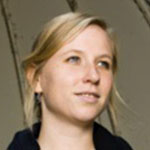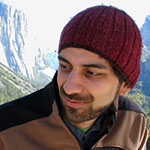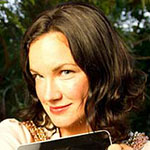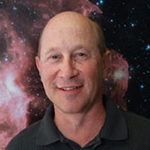Seminars are held at 4:00 PM on Tuesdays in Room F160
on the first floor of the Technological Institute (2145 Sheridan Road) unless otherwise noted
Winter Quarter 2015
| Date | Speaker / Seminar | Host | |
| Jan. 6 |
 |
Doug Watson How galaxies form and evolve remains one of the most profound problems in astrophysics today. The backbone of all theories of galaxy formation is the favored Cold Dark Matter (CDM) model for structure growth. Galaxies are believed to be tracers of the CDM cosmic web and are inextricably tied to the evolution and properties of bound regions of dark matter, so-called dark matter halos. We are in a particularly exciting era for understanding galaxy formation thanks to precision dark matter N-body simulations coupled with a rapid influx of exquisite measurements from galaxy redshift surveys out to high redshift. This allows, for the first time, the exploration of truly high-precision models of galaxy formation out to z~3. |
Claude-André Faucher-Giguère |
| Jan. 20 |  |
Mariska Kriek In past years, large and deep photometric and spectroscopic surveys have significantly advanced our understanding of galaxy growth, from the most active time in the universe (z~2) to the present day. In particular, the evolution in stellar mass, star formation rate, and structure of complete galaxy samples have provided independent and complementary insights into their formation histories. In addition, detailed studies of the properties of distant galaxies have lead to a better apprehension of the physical processes which govern galaxy growth. Nonetheless, many outstanding questions remain. In this talk I will give an overview of our current picture of galaxy growth in the past 11 billion years, discuss current challenges and outstanding questions, and introduce new and ongoing efforts to further unravel the formation histories of massive galaxies. |
Claude-André |
| Feb. 3 |  |
Joshua Peek Astronomy has always been a science of catalogs: catalogs of stars, galaxies, quasars, and planets. While most of the light in the Universe comes from these dense objects in the darkness, the contents of the universe are largely diffuse. Dark energy, dark matter, plasma, and gas make up 99.8% of the mass-energy budget of the Universe and cannot be easily cataloged. If we want to understand how the objects in the universe came to be, we must appeal to the largely invisible diffuse phase that formed them. I will try to make sense of this conundrum in three ways. The first is to use the cataloged objects to discern things about the intervening gas: through dust reddening we can measure the location and density of metal enriched gas in the Galaxy and beyond. The second is to examine the velocity-resolved emission from the gas. To do this we invent statistically robust ways to measure the shape structure of the gas, where much of the information about the diffuse phases hides. The third is to combine the two, catalogs and continuum, to delve into the 4D structure of our Galaxy. I will discuss a method in development, Kinetic Tomography, which will hopefully help us understand how the Galaxy came to be the way it is today. |
Giles Novak |
| Feb. 17 |  |
Lucianne Walkowicz Since its launch in 2009, NASA's Kepler Mission has transformed our knowledge of exoplanetary system demographics. Kepler's primary mission goal-- to quantify the occurrence rate of habitable zone Earth-size planets around Sun-like stars-- has a clear connection to astrobiology. However, in addition to its planet-finding capabilities, the Kepler data may also be used to study other questions of astrobiological interest. In this talk, I will discuss my work on two such ongoing projects: the quantification of the stellar flare rate, which influences planetary habitability through its influence on atmospheric photochemistry and escape; and the detection of anomalous stellar variability as a form of signal-agnostic optical SETI. Both of these lines of research employ machine learning techniques, making them applicable to the current and future large datasets that now dominate the astronomical landscape. |
Francesca Valsecchi |
| Feb. 24 |  |
Sarah Gallagher Supermassive black holes reside in the centers of every massive galaxy. In relatively brief spurts, black holes grow as luminous quasars through the infall of material through an accretion disk. Remarkably, the light from the accretion disk can outshine all of the stars in the host galaxy by a factor of a thousand, and this radiation can also drive energetic mass outflows. Mass ejection in the form of winds or jets appears to be as fundamental to quasar activity as accretion, and can be directly observed in many objects with broadened and blue-shifted UV emission and absorption features. A convincing argument for radiation pressure driving this ionized outflow can be made within the dust sublimation radius. Beyond, radiation pressure is still important, but high energy photons from the central engine can now push on dust grains. This physics underlies the dusty wind picture for the putative obscuring torus. I'll describe our model of the dusty wind and evaluate its success in accounting for observed properties of quasars such their mid-infrared spectral energy distributions, fractions of hidden objects, and column densities of important ions. |
John Everett |
| March 3 |  |
Mark Reid Over 2000 years ago, Hipparcus measured the distance to the Moon by triangulation from two locations across the Mediterranean Sea. However, determining distances to stars proved much more difficult. Many of the best scientists of the 16th through 18th centuries attempted to measure stellar parallax, not only to determine the scale of the cosmos but also to test Heliocentric cosmologies. While these efforts failed, along the way they lead to many discoveries, including atmospheric refraction, precession, and aberration of light. It was not until the 19th century that Bessel measured the first stellar parallax. |
Farhad Zadeh |
Past Astrophysics Seminars